Our herds — the brood herd of Registered South Poll cows and their calves — reside near the Farmhouse, while our stock herd can be glimpsed between the cedars as you wind up the driveway to The Summit. They enjoy rotational grazing schemes throughout the year, moving rapidly in the warm growing season. For our cattle, this means clean, healthy pastures bursting with fresh forage and a lot of movement, keeping their quality of life high and incidence of illness and parasites low without requiring any special feeds, additives, or treatments. Their fast movement across the pastures means our animals take only the top third of fresh-sweet tips from their forage–getting the highest nutritional value for themselves while becoming collaborator-farmers, pruning and fertilizing a crop of grass as they go. Once the animals have moved on, you see the benefit of their work as the pasture bursts into life and vigorous regrowth, ready for us and our collaborators to return multiple times in a season. Best of all? Our cattle are happy. They deal with fewer flies thanks to our wild forest swallow collaborators. Clean pastures mean they’re healthy, and the bounty and diversity of fresh forage is the best gift you can give to a ruminant. They’ll ask to get moved, lowing until you get to the gate and excitedly gamboling into fresh pasture, rushing to get big mouthfuls of the best forage.
Processes like these on a grand scale are what built and sustained grasslands over millennia. Without the microbes and fungus in the soil, without the plants collecting the energy of the sun, without the huge herds of ruminant animals eating those plants and the predators that stalked them, grasslands would not have existed in the first place. Without these ingredients, the same land becomes forest or desert. Rather than a pack of wolves or pride of lions chasing and keeping the herd moving, our cattle have gotten used to long electric-lined paddocks and humans opening a gate so they can excitedly run through, gobbling up fresh forage… but like their wild ancestors, the result is more movement, healthier herds, and the highest quality food available, growing itself and animal-managed. Their hoof impact, urine, and manure is dispersed in a way that helps rebuild the soil and retain water, rather than overwhelming it with waste and damage — together we are investing in our future.
We know from others that have succeeded with rotational grazing and other regenerative methods before us — Joel Salatin of Polyface Farms is right here in the Valley, Allan Savory, Greg Judy, and the Soil Carbon Cowboys, among others — that there is huge potential for healing the land with these methods. Rebuilding the soil impacts so much: promoting ecological diversity of plants, animals, and bugs, increasing rainwater absorption and preventing erosion, sequestering carbon in the soil, and increasing overall fertility of the land are just some of the benefits.
We believe these methods are good for humans, too. Grass-fed and finished beef with no antibiotics and no GMOs is healthier and has been shown to have a higher nutritional value. And, unlike the beef that you find in the grocery store, you can truly know where your food came from and the conditions it lived in. Anyone is welcome to contact us and make an appointment for a farm tour to meet the animals, see where they live, and understand for themselves. One of the many human benefits of our farming methods is how enjoyable it is for us to spend time and collaborate with our animals in beautiful thriving pastures brimming with wildlife, an experience we are glad to share. Broadening the scope, we hope to support our communities by investing in our ecosystems as well as by adding to and supporting a robust local food supply chain — even more important now as global crises and natural disasters have demonstrated how delicate our food supply can be.
Beyond the environmental, health, and food security benefits, we feel there is just something in truly knowing your food and where it came from. It’s an experience natural to humans–and one we hope you’ll share with us.
SO, WHAT DOES THAT MEAN FOR OUR BEEF?
it’s 100% Pasture Raised and Grass-Finished
our cattle get No Grains, No GMOs, only organic hay as necessary in the cold season and high quality forage–clean and diverse nutrition that goes into your food
our cattle get No Antibiotics or unnecessary treatments–only good nutrition, exercise, and sunshine go into the end product and onto your plate
it comes from happy cattle that eat the best, most nutrient-dense food available and live fulfilling and stimulating lives in thriving pastures, in strong relationship with nature
it’s Transparently grown and sold
Through hard work, trial and error, collaboration, and building relationships we hope to help grow the future of our community, and we welcome you to join us. Your involvement and support–whether visiting the farm, eating our food, or finding and engaging us online–are ingredients we won’t thrive without.
FURTHER READING
Pastures for Profit: A Guide to Rotational Grazing covers a lot of the basic why’s and how’s of rotational grazing
Our Cattle
Our cattle play an integral role in regenerating the land, helping create sustaining abundance and growing ecological diversity in the present and into the future. Through careful observation, stewardship, and collaboration with the land and animals, we are rebuilding our soils, providing our cattle with a high quality of life, and providing our communities with thoughtfully grown food that they can truly know.

